2019 Honda Civic vs. 2019 Toyota Corolla: Which Compact-Car Icon Makes a Better Hatchback?
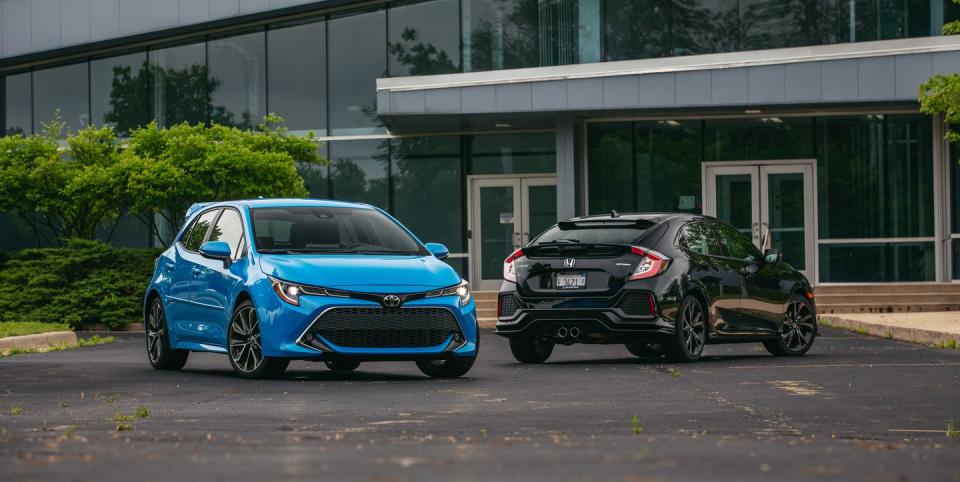

Beneath the overbearing shadow cast by the popularity of crossovers, there's much life still to found in the compact-car segment. The 2019 Honda Civic and the 2019 Toyota Corolla remain arguably the most recognizable of their kind, with longstanding production histories and loyal followings built on value, quality, and practicality—and, to an extent, a little driving satisfaction. But how do the latest examples of these two icons compare when lined up door handle to door handle?
The Matchup
For this face-off, we chose front-wheel-drive hatchback versions of each, as they're the most versatile of the available configurations (both makes also offer conventional sedan models, and the Civic also can be had as a two-door coupe). All-wheel drive is not in the cards here. The awkwardly styled Honda, a veteran on our current 10Best Cars roster, starts at $22,370 in LX hatchback form. The one-step-up Sport model shown here costs a still-thrifty $23,170 and brings few frills beyond 18-inch wheels (16s and 17s are standard on non-Sport models), central dual exhaust outlets, and black body accents. Stepping up to the costlier EX and EX-L trim levels brings increasingly more luxury and convenience amenities, with the Sport Touring capping the lineup at $29,670 and including all of the above.
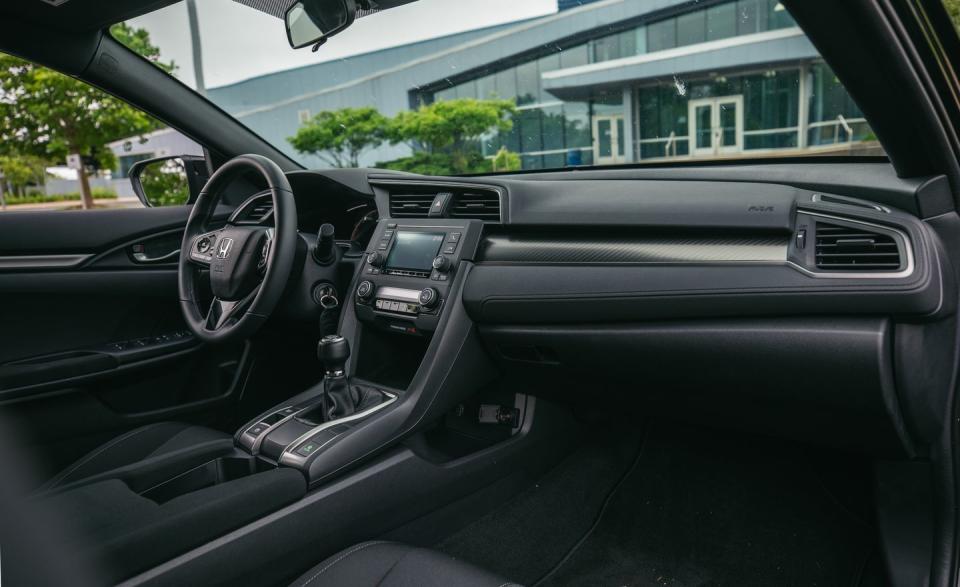
The arrival of the 2019 Corolla hatch foreshadowed the improvements applied to the updated-for-2020 sedan model. The hatchback starts at $21,070 in SE guise and has been carefully sculpted to be easy on the eyes in every way the Civic is not. It, too, can be had with a host of optional equipment, with our top-level XSE test car, at an as-tested $25,578, including an 8.0-inch touchscreen infotainment system with navigation, LED headlights, and the recommended 18-inch wheels. Thanks in part to its comically large two-tier rear spoiler, this Corolla appears as if it's rolling on casters when fitted with the standard 16-inch wheels. While Honda does not have a direct Civic-badged competitor for the 2020 Toyota Corolla hybrid sedan, it does offer the Insight hybrid sedan, which is close enough to count as one. As far as Corollas go, this new hatchback may be Toyota's best effort of late.
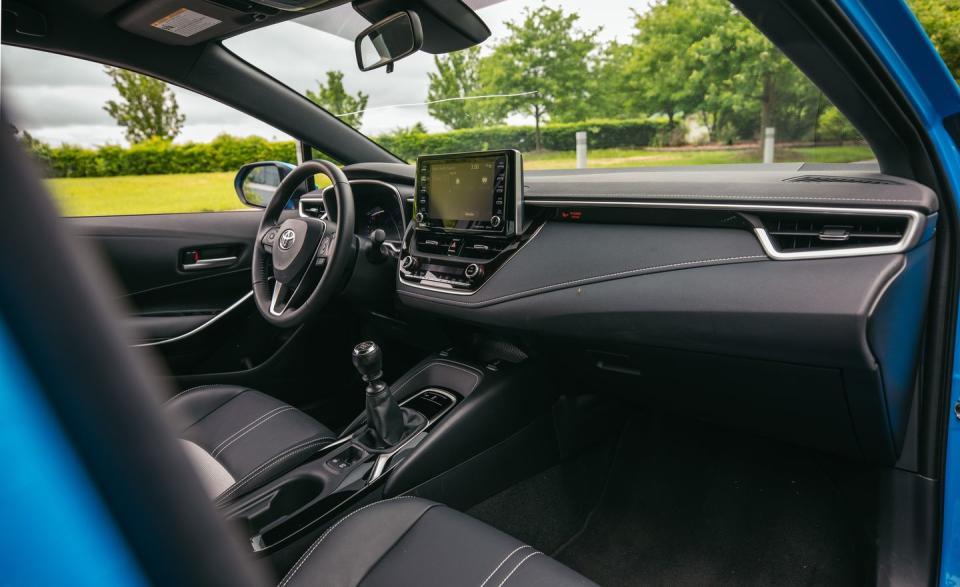
On the Road
Both of our test cars feature standard six-speed manual transmissions because, as simple creatures, we still enjoy having a little fun on our daily slogs. Choose any Civic hatch other than the Sport or the racy Type R, and you'll get Honda's nicely sorted continuously variable automatic transmission (CVT); add $1100 to the price of the Toyota for its CVT.
The manual's involvement factor notwithstanding, the Corolla simply underdelivers on its sporty appearance no matter how it's equipped. A quick trip around the block reveals that it has a long way to go as a machine designed to be operated by humans. Its chunky steering wheel directs rather slow and vague electrically assisted steering, the action of its shift lever is sloppy, clutch take-up is nonlinear, and the brake pedal feels soft and squishy. The Corolla's chassis has no interest in showing you a good time, nor does its engine, a naturally aspirated 168-hp 2.0-liter inline-four that revs with such little enthusiasm we question the validity of its 4800-rpm torque peak, a meager 151 lb-ft. The Toyota averaged the same 29 mpg as the 167-pound-lighter Honda during our 350-mile evaluation. While a similar example we previously reviewed returned 36 mpg on our 75-mph highway fuel-economy test, 1 mpg shy of its EPA highway estimate, a 2017 Civic Sport posted an impressive 43-mpg result on the same test.
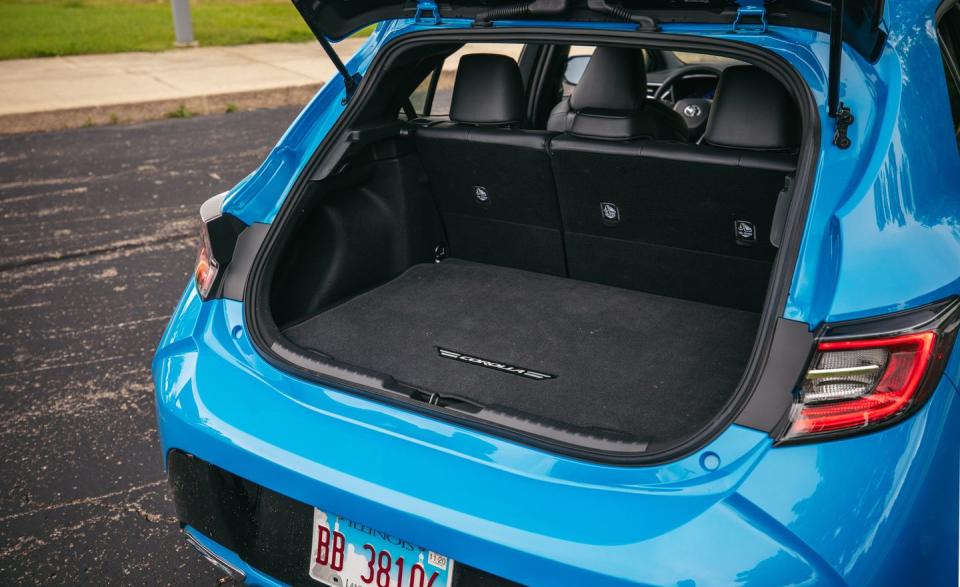
Take the Honda Civic for a spin, and it will proverbially tug at its leash. Like the Toyota, this is a sensible vehicle that rides comfortably and tracks calmly for long stretches on the highway. Yet, you feel as if you sit deeper inside it than in the Corolla, and its primary controls all move with tightness, precision, and a pleasing amount of feedback. While both of our test cars wore all-season tires and stopped from 70 mph in about the same distance (170 feet for the Honda to the Toyota's 175 feet), the Civic's suspension tuning delivers far greater body control and outright grip in corners, evidenced by its stout 0.91-g orbit around the skidpad versus the Corolla's lowly 0.82-g measurement.
Similarly, the Honda's turbocharged 1.5-liter inline-four, good for 180 horses and 177 lb-ft of torque in the Sport, revs eagerly while emitting a throaty growl; it generates just as much noise inside the cabin at full throttle (85 decibels) as the Toyota. Shorter gear ratios mean that the more powerful Civic requires two shifts to reach 60 mph (the Corolla can complete the deed in second gear), which resulted in it being only 0.2 second quicker to that mark at 7.2 seconds. But the torquey Honda is more than five seconds speedier in executing our top-gear 50-to-70-mph passing-maneuver test. From our previous experience, opt for a Civic Sport Touring hatch with a CVT and its zero-to-60-mph time drops to 6.9 seconds, whereas the automatic Corolla hatch's stretches to a lazy 8.3 seconds.
The Inside View
Neither the Civic nor the Corolla impresses with their interiors. Seriously, a smartphone taped to a bare dashboard would be only slightly less functional than the Civic's base 5.0-inch infotainment interface (a nicer 7.0-inch touchscreen comes on higher trim levels). Hard plastics are plentiful in both cabins, and neither wows with design flourishes, although both have relatively comfy front seats. The Toyota at this level brings a few extra niceties such as two-tone leather upholstery, keyless entry and pushbutton start, and selectable rev matching for the manual transmission. But it still has the ambiance of an economy car, and its instrument cluster lacks the easy-to-read central tachometer of the Honda.
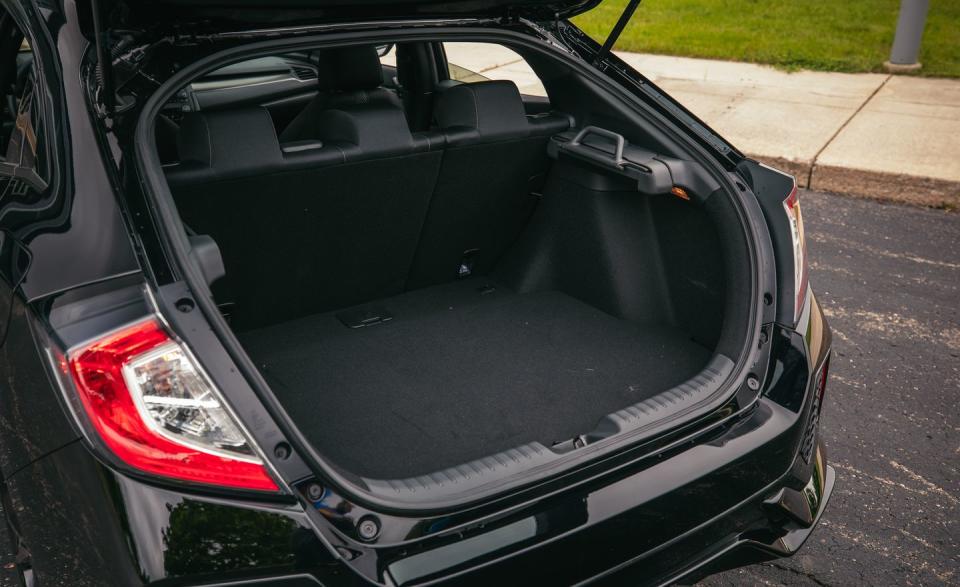
The Civic's aft quarters are far superior to the Corolla's in terms of practicality, including an airier back seat that is far more adept at accommodating both two and three passengers, especially with regard to shoulder room. Occupants have 97 cubic feet of space to work with in the Honda versus only 84 in the Toyota. There also are a sizeable 23 cubes of cargo space under the Civic's hatch yet only 18 under the Corolla's. Measured in carry-on-size boxes, we squeezed five behind the Civic's rear seats while the Corolla could swallow only two. Fold down the rear seatbacks, and those figures increase to 18 and 14 boxes, respectively.
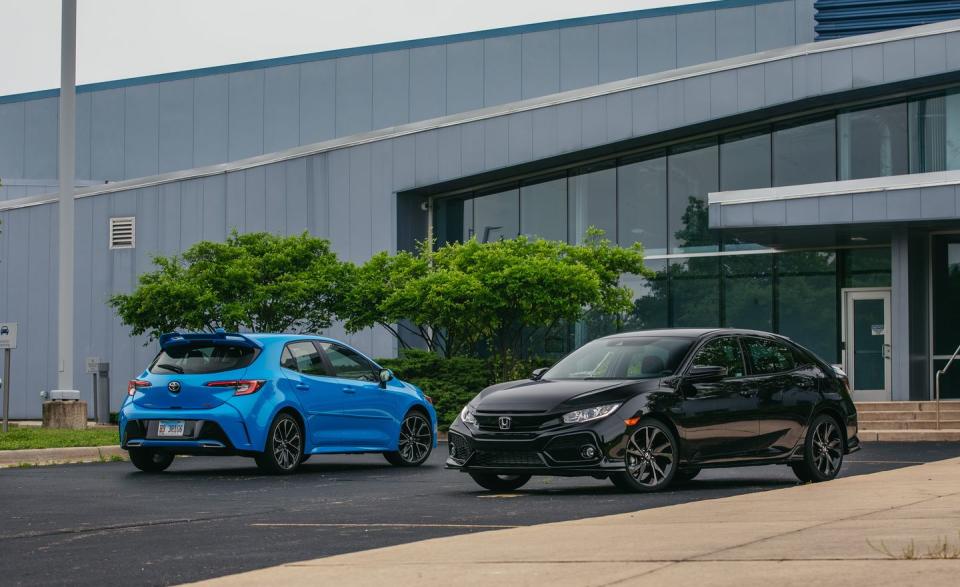
The Bottom Line
While other solid entries make for a highly competitive compact-car space, the choice between the latest Honda Civic and Toyota Corolla hatchbacks is pretty cut and dry. Along with the Civic lineup being broader as a whole, Honda's hatch remains attractively priced, better packaged, and far more rewarding to operate—with its only real vice being looks that only its mother could love. Don't count us as overly maternal. The Civic is simply the more satisfying machine for the money.
You Might Also Like

 Yahoo Autos
Yahoo Autos 